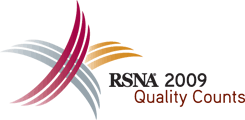
Abstract Archives of the RSNA, 2009
Abhishek Mahajan MD, Presenter: Nothing to Disclose
K. Prakashini MBBS, MD, Abstract Co-Author: Nothing to Disclose
Sripathi Smiti MBBS, DNB, Abstract Co-Author: Nothing to Disclose
Rajgopal Kv MBBS, MD, Abstract Co-Author: Nothing to Disclose
V.R.K. Rao MD, Abstract Co-Author: Nothing to Disclose
Meenakshi H. Thakur MD, Abstract Co-Author: Nothing to Disclose
1.To evaluate & determine the relevance of clinical and CT criteria, particularly extravasation, for prediction of clinical outcome in Blunt splenic trauma (BST).
2.To assess the value of preoperative CT grading (AAST VS RESCINITI) systems to enable prediction of successful nonoperative management (NOM).
Retrospective blinded review was performed of the records of 42 patients with BST during the 4-year period. Admission CT was reviewed for injury grade and presence of an arterial blush by a radiologist blinded to patient outcome. Hospital charts were reviewed for success of NOM & late splenic complications. ANOVA & logistic regression evaluated the correlation of AAST grade vs CT based Resciniti score of injury with management & outcomes.
42 splenic injuries were noted and retrospectively CT findings were correlated with the surgical outcome. There were 13 (31%) grade I, 5 (11.9%) grade II, 9 (21.4%) grade III, 4 (9.5%) grade IV, and 11 (26.2%) grade V splenic injuries. 27 patients had AAST score 4 had surgery. Injuries with score between 2.5-4.0(n=16) were considered of intermediate severity, 37%underwent NOM, 50% had emergency surgery and 13% needed delayed surgical intervention. AAST gradeIII and Resciniti score >4 had surgical management with 100% correlation. Of the CT criteria, contrast extravasation showed the maximum risk for need for surgery & was seen to be 36 folds.
Based on AAST grading management of BST remains controversial. The choice management should be mainly based on clinical findings, presence of Capsular blush and Resciniti score, rather than the AAST grade alone.
NOM of BST is a well-established method to salvage splenic function; however,criterion for the same remains controversial.
Mahajan, A,
Prakashini, K,
Smiti, S,
Kv, R,
Rao, V,
Thakur, M,
Splenic Injury Grading System AAST vs CT-based Resciniti: Which System Better Predicts Need for Splenectomy?. Radiological Society of North America 2009 Scientific Assembly and Annual Meeting, November 29 - December 4, 2009 ,Chicago IL.
http://archive.rsna.org/2009/8000044.html

